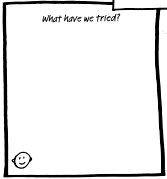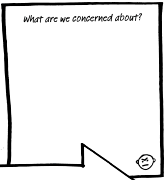The tool
Let’s take a closer look at the 4 plus 1 questions tool

What have you tried?

In this section you need to describe exactly what you have tried. Make sure that you give enough details. For example:
Don’t write ‘We communicated our requirements to Jo’
Instead describe the steps that you took, for example ‘We sent Jo a list of our requirements via email and via a letter’
What have you learned?

Don’t confuse what you have “learned” with what you are “pleased” about. Learning is about finding out new information that might be useful to know in the future.
For example, you may be pleased that the person you support made a new friend at the gym because they stopped to have a coffee in the coffee shop there. What you have learned is that when supporting this person to attend other activities, planning time to sit down and have a coffee is a good idea if they want to develop new relationships.
Ensure that what you have learned is added to the one-page profile, person-centered description (support plan) or other relevant tool.
What are you pleased about?

It’s great to share and recognize successes. This section is all about taking time to celebrate achievements and identifying what’s working.
It’s also an opportunity to take actions that will safeguard what people are pleased about, particularly if it is an unforeseen consequence of what has been tried.
What are you concerned about?

Sometimes it can be hard for people to find an opportunity to express their worries about a situation.
This section of the tool encourages everyone to think about and discuss those things that concern them and identify what changes need to happen.
What do we need to do next?

After everyone’s thoughts have been captured, look together at the answers and ask people “Given what we now know, what do we do next?”
Then develop SMART actions (who, what, when, etc.) for what people decide to try.